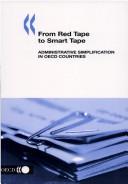| Listing 1 - 2 of 2 |
Sort by
|
Book
Year: 2018 Publisher: Washington, D.C. : The World Bank,
Abstract | Keywords | Export | Availability | Bookmark
 Loading...
Loading...Choose an application
- Reference Manager
- EndNote
- RefWorks (Direct export to RefWorks)
Regulatory impact assessment is a tool used by governments to support evidence-based and coordinated policy making. This paper contributes to the debate on regulatory impact assessment in developing countries by addressing the lack of a systematic account of reforms, and the lack of a comprehensive explanatory account of reform outcomes. The study first maps developing countries' regulatory impact assessment reforms between 2001 and 2016. In total, 60 reforms are identified. Reform design is analyzed by measuring adherence to six internationally recognized "good practices." The study then assesses whether the reforms-two years or more after they were launched-led to functioning regulatory impact assessment systems. Of the 60 reforms, 20 led to functional systems within two years of the conclusion of the reform. Three reforms were too recent to be assessed. The study shows that adherence to good practices is a necessary but not sufficient condition for early success. Among the six good practices, two are shown to be particularly decisive for the success of regulatory impact assessment reforms, namely, formal integration of regulatory impact assessment in policy making and the presence of a regulatory oversight unit. The second part of the study analyzes regulatory impact assessment reforms that did not produce early success despite adhering to good practices. The study tests several hypothetical reasons for slow developments. It points to the importance of donor flexibility and patience and the need for building reform constituencies inside and outside government. The traditional orthodoxy of regulatory impact assessment reforms as an extension of red tape reduction is challenged. The paper finally presents several possible policy implications of the findings.
Adaptation to Climate Change --- Business Environment --- Environment --- Government Reform --- International Economics and Trade --- International Trade and Trade Rules --- Investment and Investment Climate --- Macroeconomics and Economic Growth --- Private Sector Development --- Reform Design --- Regulatory Governance --- Regulatory Impact Assessment


ISBN: 1280169974 9786610169979 9264100687 9264100679 Year: 2003 Publisher: Paris : OECD Publishing,
Abstract | Keywords | Export | Availability | Bookmark
 Loading...
Loading...Choose an application
- Reference Manager
- EndNote
- RefWorks (Direct export to RefWorks)
“Too much red tape” is a common complaint from businesses and citizens in OECD countries. This report analyses proven approaches commonly adopted by governments to reduce and streamline administrative procedures like one-stop shops (physical and electronic), simplification of permits and licence procedures, time limits for decision-making, methods to measure administrative burdens, regulatory-compliance assistance for small and medium-size companies, and increasing reliance on IT-based solutions.
Administrative procedure. --- Bureaucracy. --- Business enterprises. --- Government paperwork. --- Industrial management. --- Licenses. --- Paperwork (Office practice). --- Government paperwork --- Administrative procedure --- Government - General --- Law, Politics & Government --- Political Institutions & Public Administration - General --- Adjective administrative law --- Adjudication, Administrative --- Administrative adjudication --- Administrative rule making --- Regulatory reform --- Rule making, Administrative --- Federal paperwork --- Paper work, Government --- Paperwork, Government --- Law and legislation --- Procedure (Law) --- Office practice in government --- Paperwork (Office practice) --- Public records
| Listing 1 - 2 of 2 |
Sort by
|

 Search
Search Feedback
Feedback About UniCat
About UniCat  Help
Help News
News